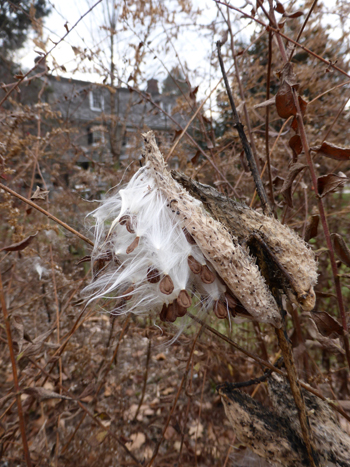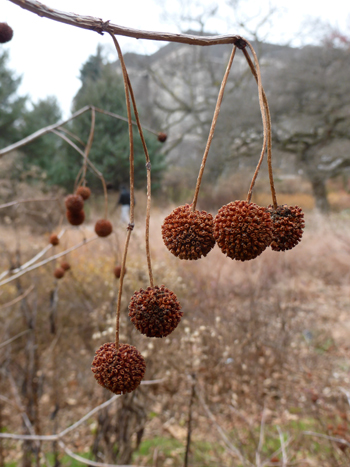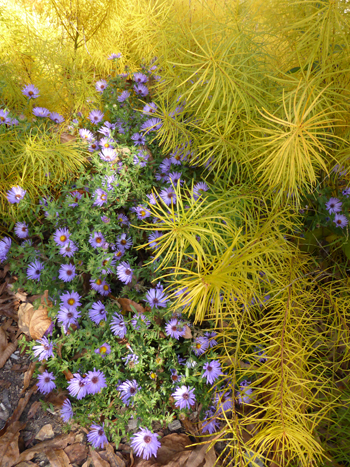Plants of the Week: December 9
 Asclepias, commonly known as milkweed, is an important nectar source for bees and other nectar-feeding insects. Asclepias tuberosa serves as the larval food source for the monarch butterfly. Other insects, specialized in digesting the milky sap, also feed on various species of milkweed. Asclepias seeds are arranged in overlapping rows. Each seed has several filament-like hairs known as pappus attached to it. As the follicles ripen and the seed pod splits open, dried pappi fluff up, ready to catch the wind and distribute the seed. Photo credit: J. Coceano
Asclepias, commonly known as milkweed, is an important nectar source for bees and other nectar-feeding insects. Asclepias tuberosa serves as the larval food source for the monarch butterfly. Other insects, specialized in digesting the milky sap, also feed on various species of milkweed. Asclepias seeds are arranged in overlapping rows. Each seed has several filament-like hairs known as pappus attached to it. As the follicles ripen and the seed pod splits open, dried pappi fluff up, ready to catch the wind and distribute the seed. Photo credit: J. Coceano
Garden location: Biostream
 Native to Eastern North America, Cephalanthus occidentalis is frequently encountered in wet open areas, low woods, and along flood plains. Protruding styles give the flower heads a pincushion-like appearance. Flower heads mature into hard spherical orb-like fruits consisting of multiple tiny two-seeded nutlets. Fruiting heads persist throughout the winter months. The deciduous shrub rarely needs pruning, but can be given a hard rejuvenatative cut back. Photo credit: J. Coceano
Native to Eastern North America, Cephalanthus occidentalis is frequently encountered in wet open areas, low woods, and along flood plains. Protruding styles give the flower heads a pincushion-like appearance. Flower heads mature into hard spherical orb-like fruits consisting of multiple tiny two-seeded nutlets. Fruiting heads persist throughout the winter months. The deciduous shrub rarely needs pruning, but can be given a hard rejuvenatative cut back. Photo credit: J. Coceano
Garden location: Biostream
 North Creek Nurseries calls Symphyotrichum oblongifolius ‘October Skies’ the “shorter, bushier, bluer sister of ‘Raydon’s Favorite’. A strong growing low mound of bushy foliage covered in lavender blue flowers in mid fall. Highly tolerant of drought and poor soils, this Primrose Path introduction has excellent groundcover potential.” For a spectacular fall moment, partner Symphyotrichum with Amsonia. Photo credit: J. Coceano
North Creek Nurseries calls Symphyotrichum oblongifolius ‘October Skies’ the “shorter, bushier, bluer sister of ‘Raydon’s Favorite’. A strong growing low mound of bushy foliage covered in lavender blue flowers in mid fall. Highly tolerant of drought and poor soils, this Primrose Path introduction has excellent groundcover potential.” For a spectacular fall moment, partner Symphyotrichum with Amsonia. Photo credit: J. Coceano
Garden Location: between Willets Dormitory and the Biostream





No Comments